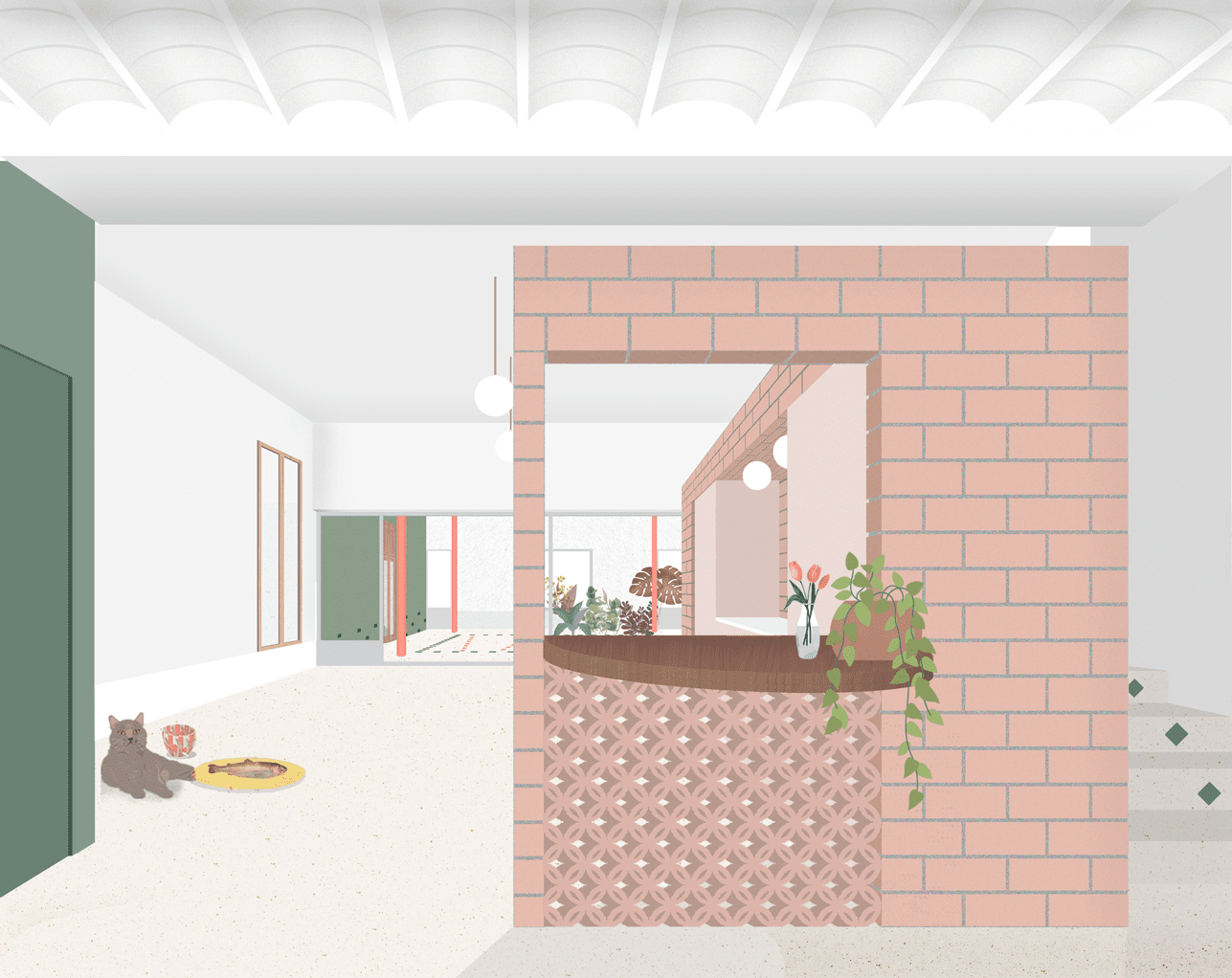
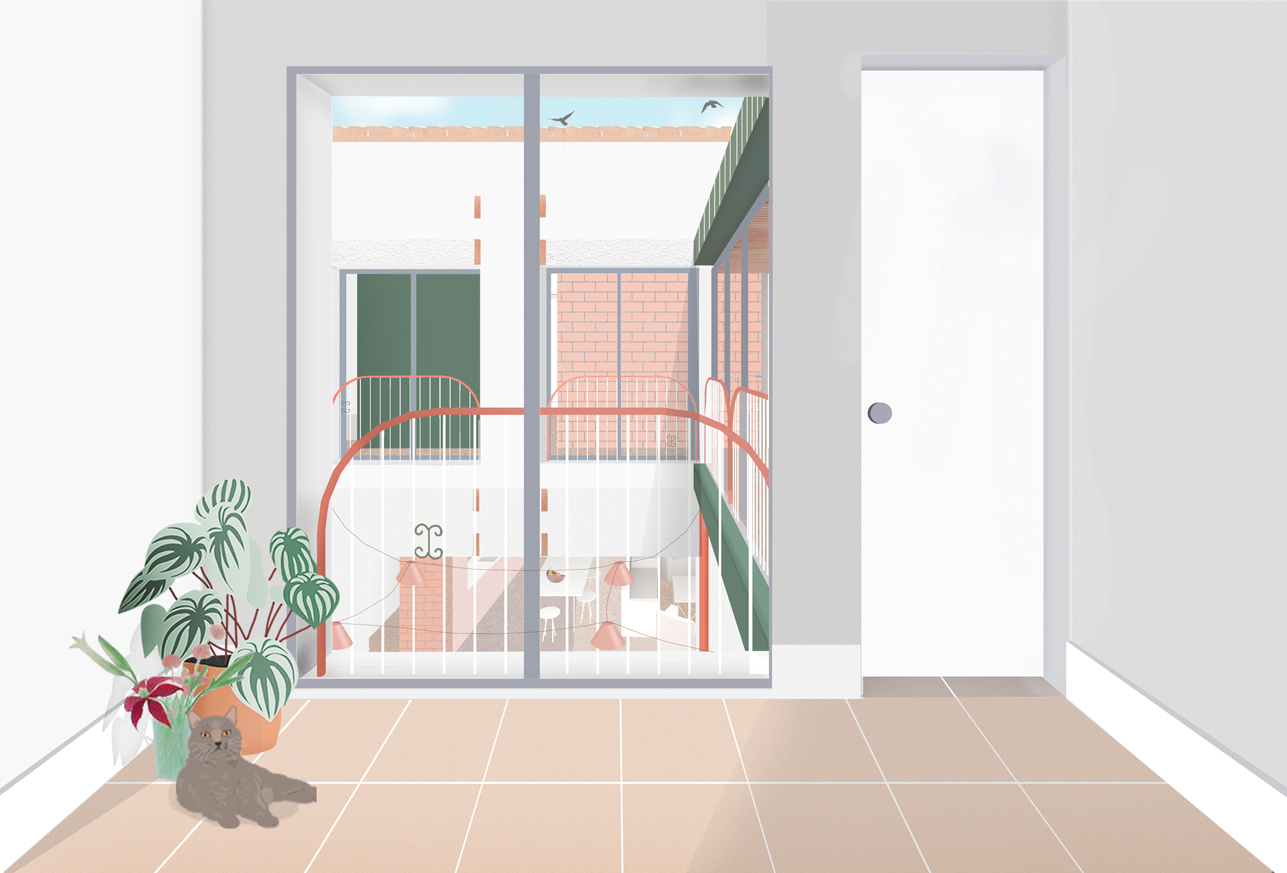
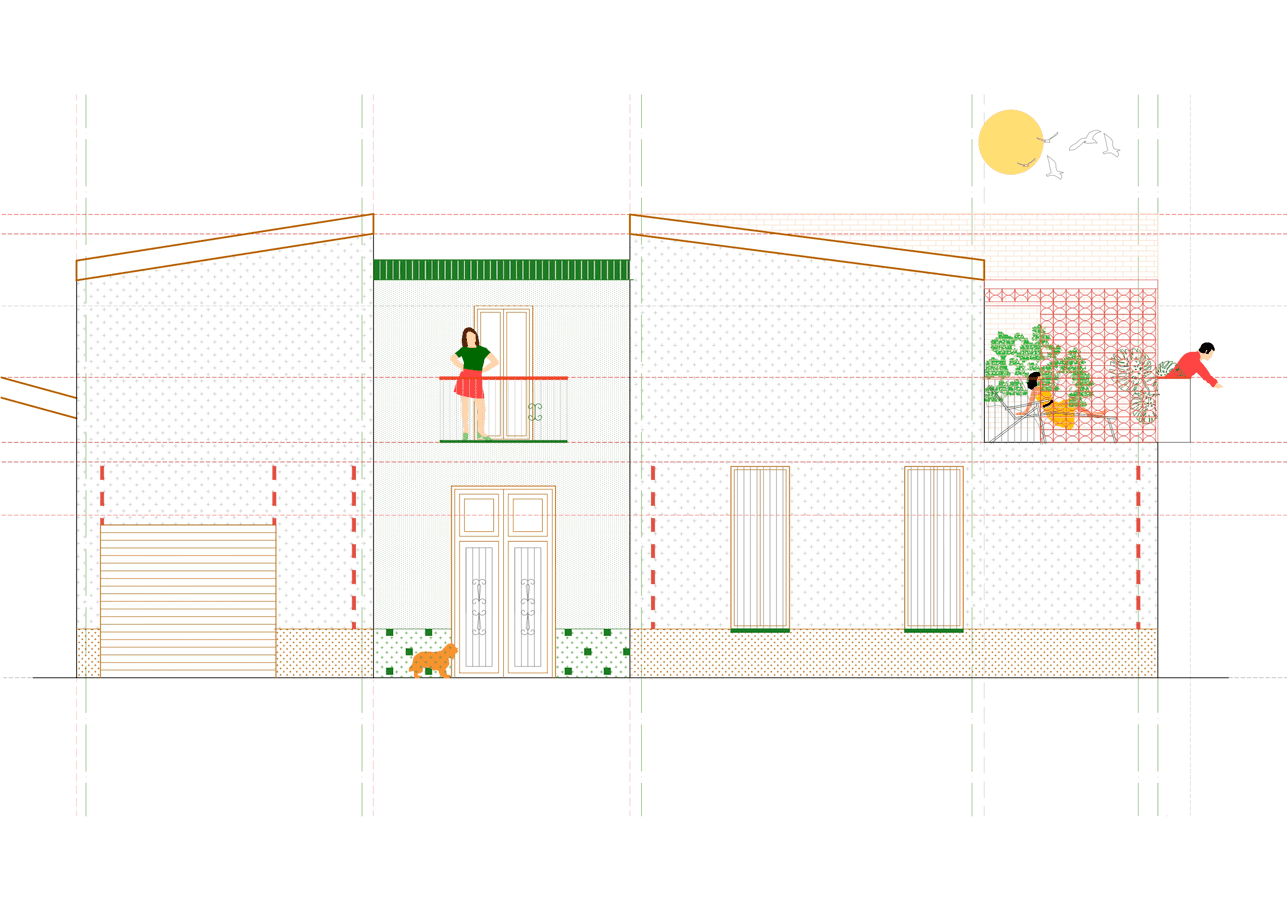
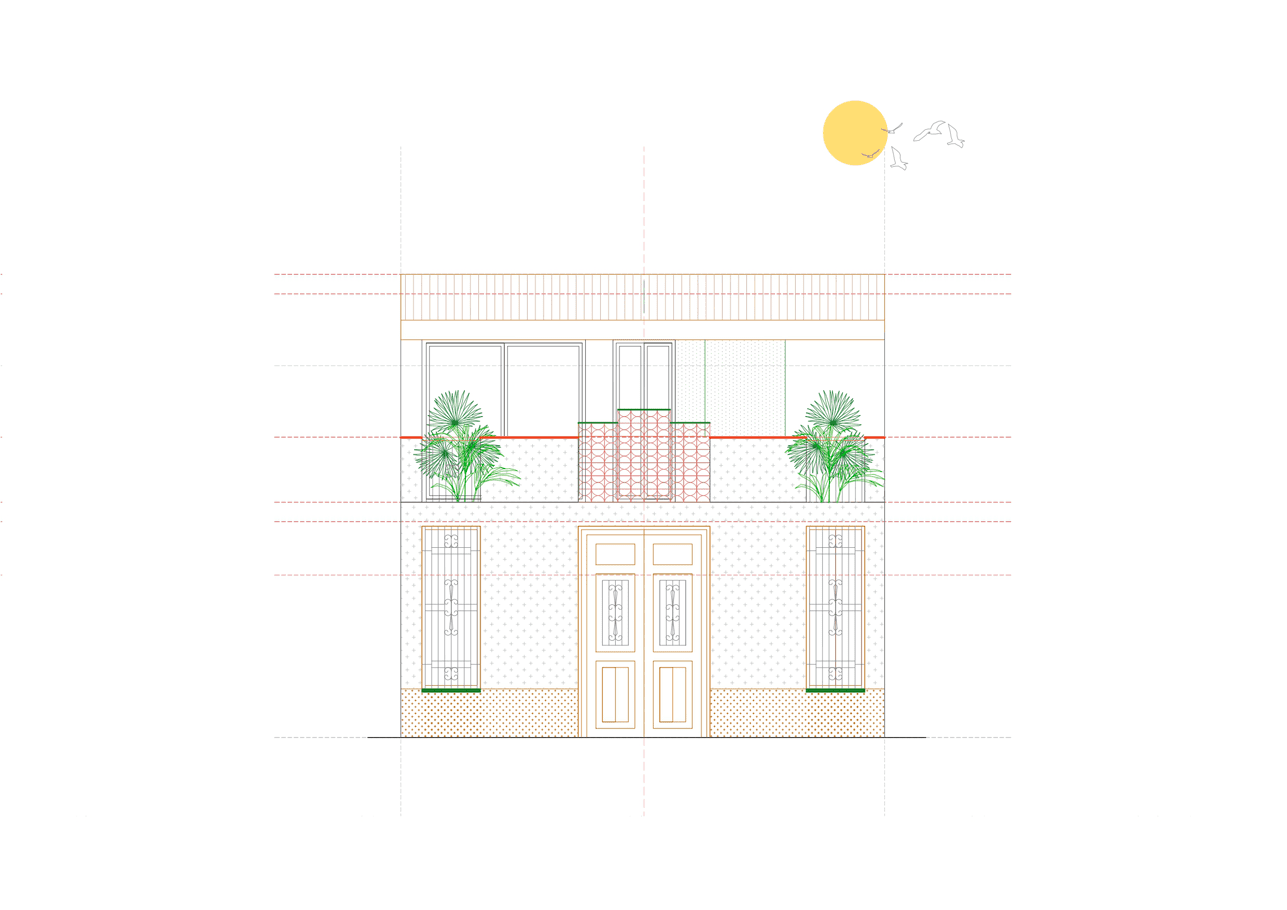
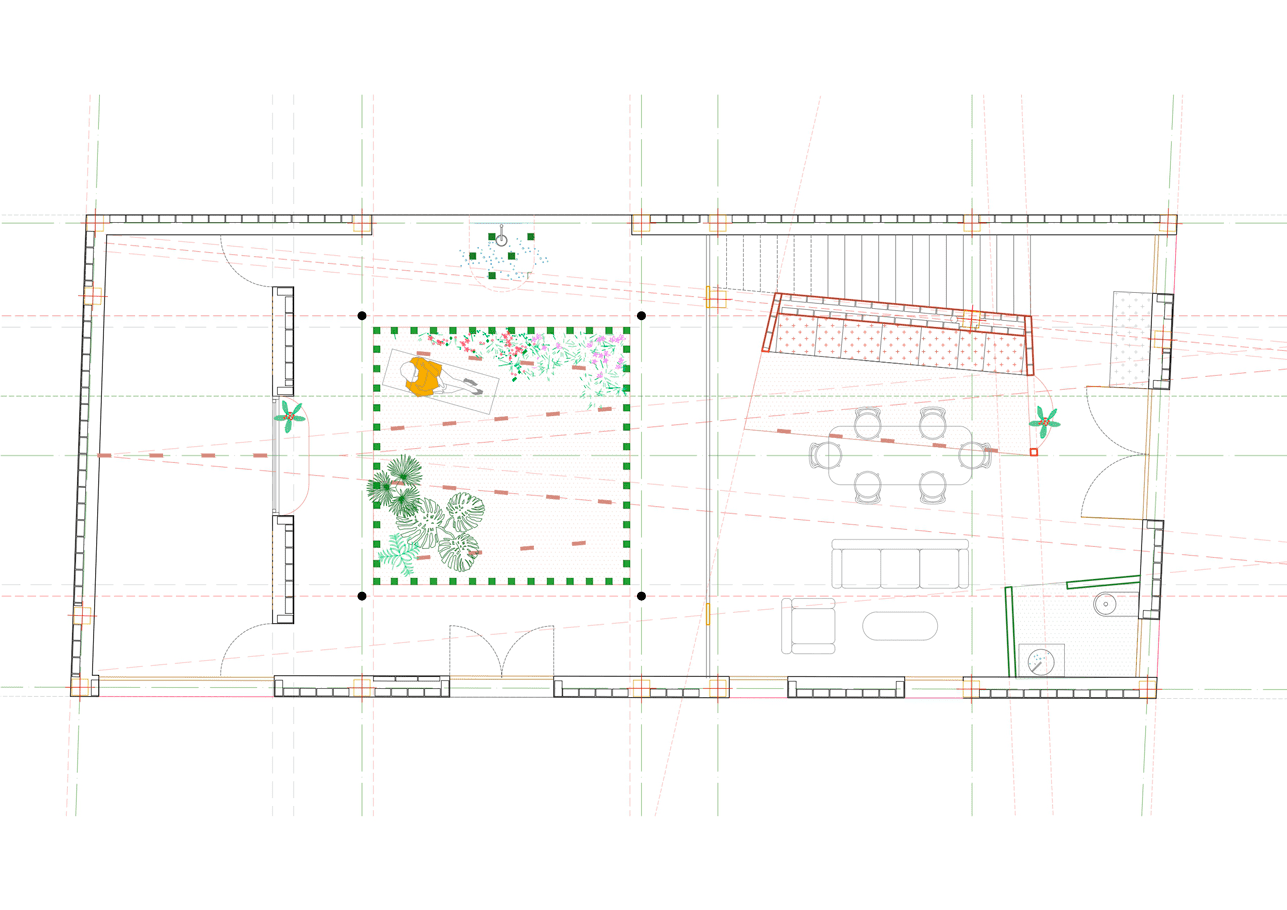
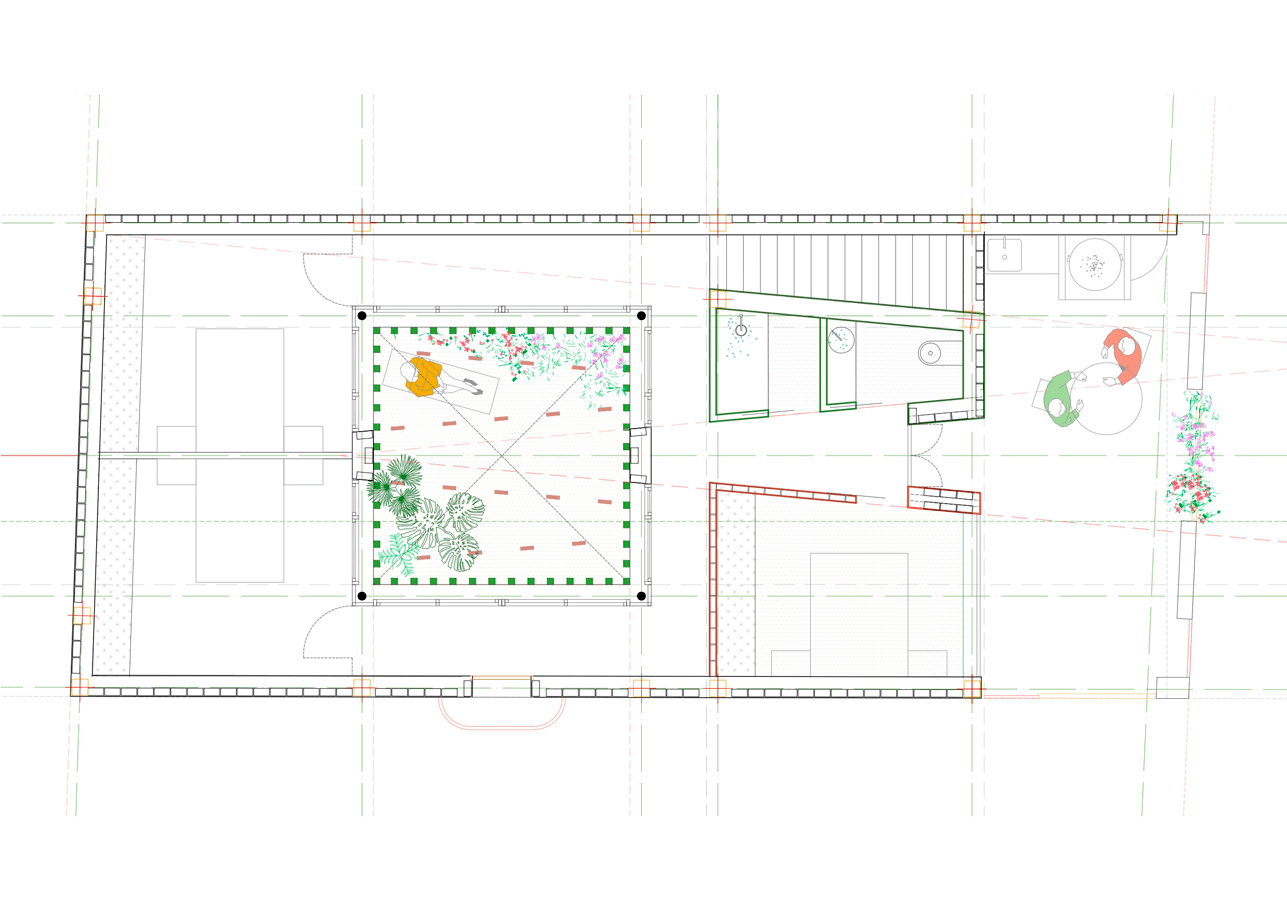
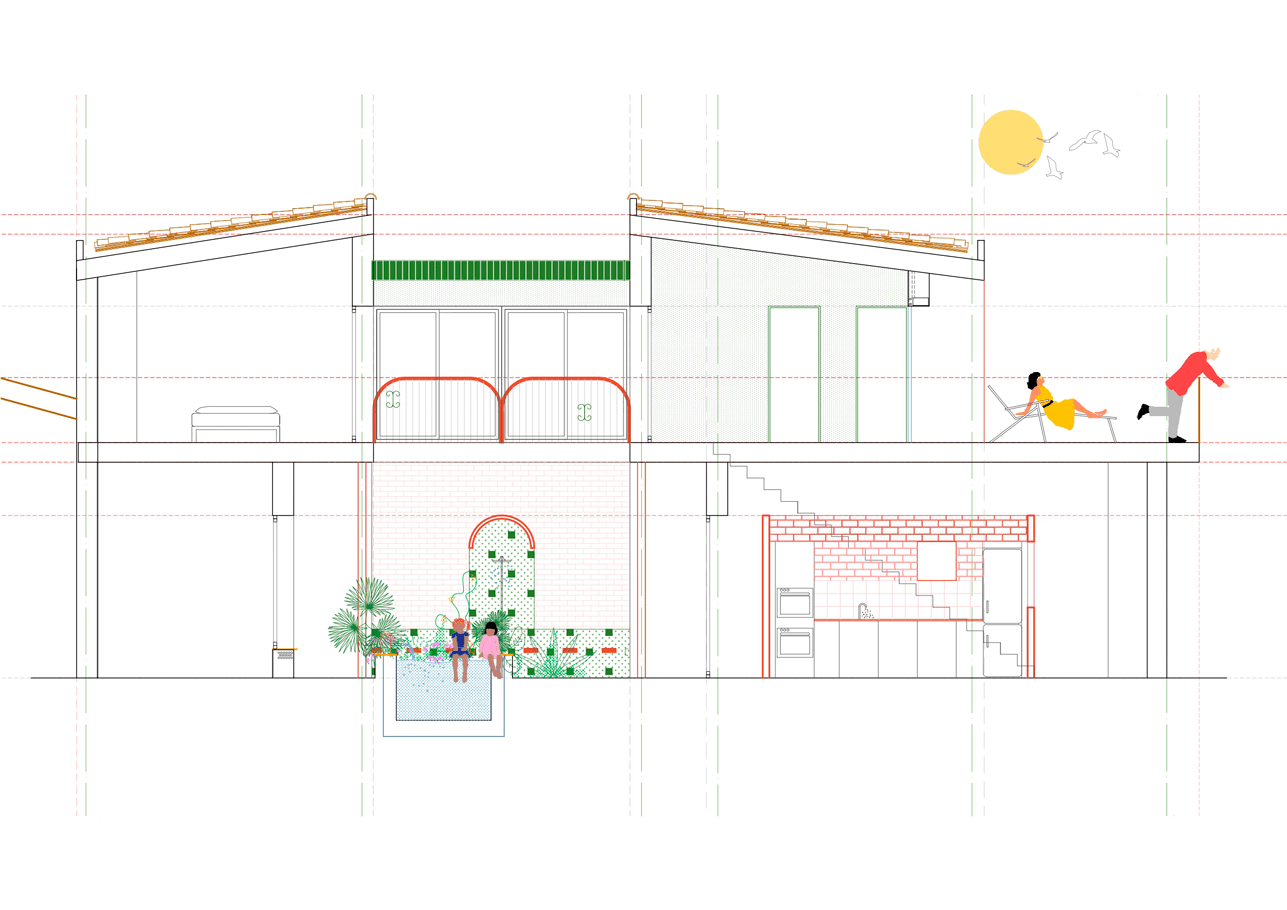

La casa cuatro estaciones
The “Casa cuatro estaciones” was commissioned by Alejandra and Emlyn from Piano Piano so that they could escape to the Valencian village of Alfafar when they grew tired of the London weather. Alejandra immediately emphasized her memories of the existing house from when she visited her grandparents as a child: the high ceilings, wooden beams, and large wooden doors. Emlyn insisted on the importance of outdoor spaces so they could enjoy the Mediterranean climate.
We designed this corner house after demolishing the one that previously stood on the plot: a single-story house without much architectural interest as a whole, but from which we were able to salvage windows and railings to reuse in the future home.
We wanted light to enter all the rooms. That is why the two outdoor areas of the house, a central interior courtyard and a terrace on the first floor, are the most prominent areas. The rectangular shape and length of each of the facades strongly influenced the layout and location of the areas in the program. The courtyard connects the two floors of the house and organizes the program: on the ground floor, it separates the living area from the garage, while on the upper floor, it separates the master bedroom and a compartmentalized bathroom, both attached to the terrace, from the wing where the children’s bedrooms are located.
In terms of circulation and layout, we wanted a fluid design, without closed corridors or residual areas, favoring visual continuity and connection between rooms and with the exterior, which all rooms face. This allowed us to blur the boundary between inside and outside, inviting light and breeze to flow through. In the courtyard, family and friends can enjoy refreshing dips in a small pool, and on the terrace, they can enjoy outdoor meals next to the barbecue, gazing out onto the street from behind a discreet latticework.
As for the materials, as we usually do in our projects, we wanted to work from a balance. The house has many different visual and material stimuli, but they come together precisely through moderation. The clients wanted ceramic mosaics and to hear the sound of water so that, in some way, it would transport them to an Arab courtyard, but they also wanted aged exposed brick and a curved vaulted ceiling reminiscent of the previous house, as well as dark green and wood to bring to mind the sobriety of an English club.
Our response was to strive for a balance between all of these elements, using cool and warm colors to achieve this. It’s wonderful when ideas take shape, filter through, and adapt to their surroundings.
We used earthy colors to bring warmth to the brick elements—a core that conceals the kitchen and staircase—the terracotta latticework that filters access and closes off the façade, and the circular steel pillars that are visible in the courtyard and form an ambulatory around it. We also use strong, cool green in the boldness of the closed volumes that emerge from the floor plan and also splashes across the flooring. Among all of these, we laid continuous flooring in light tones that unifies the space and accentuates the brightness, and discreet woodwork in anodized aluminum in the courtyard and in medium tones of wood toward the street and terrace.
From the street, the project once again works on balance: it is conceived as an intervention that combines Mediterranean architectural tradition with a contemporary language, always seeking spatial clarity, material warmth, and adaptation to the domestic and village scale.
On its eastern side, the façade is organized into three distinct volumes that respond to the proportion and rhythm of the street. The central body, in green tones, marks the entrance to the courtyard and helps to dignify a façade that has sometimes felt secondary, while the white sides dialogue with it with simplicity. The sloping roofs reinforce the typological reading of traditional housing.
On its north side, the façade is single-story, like the house Alejandra remembered, and a terrace above it looks curiously out onto the street.
Overall, we wanted the “Casa cuatro estaciones” to offer a dialogue between the interior and exterior: sober, balanced, and respectful of its surroundings, blending in with the neighboring houses while also evoking memories of past travels and experiences.

